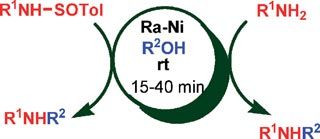New nanoporous material has highest surface area yet
University of Michigan researchers have developed a nanoporous material with a surface area significantly higher than that of any other porous material reported to date.
"Surface area is an important, intrinsic property that can affect the behavior of materials in processes ranging from the activity of catalysts to water detoxification to purification of hydrocarbons," professor of chemistry Adam Matzger said.
Until a few years ago, the upper limit for surface area of porous materials was thought to be around 3,000 square meters per gram. Then in 2004, a U-M team that included Matzger reported development of a material known as MOF-177 that set a new record. MOF-177 belonged to a new class of materials known as metal-organic frameworks - scaffold-like structures made up of metal hubs linked together with struts composed of organic compounds. Just one gram of MOF-177 has the surface area of a football field.
"Pushing beyond that point has been difficult," Matzger said, but his group achieved the feat with the new material, UMCM-2 (University of Michigan Crystalline Material-2), which has a record-breaking surface area of more than 5,000 square meters per gram.
The researchers used a technique called coordination copolymerization to produce the new material. Previously, they used the same method to create a similar material, UMCM-1, which was made up of six, microporous cage-like structures surrounding a large, hexagonal channel. By using a slightly different combination of ingredients, Matzger's group came up with UMCM-2, which is composed of fused cages of various sizes and does not have the channel found in UMCM-1.
"The new structure is a bit surprising and shows how the coordination copolymerization method has real potential for new materials discovery," Matzger said.
In the quest for new materials capable of compactly storing large amounts of hydrogen, researchers have assumed that increasing the surface area of porous materials will result in greater storage capacity. Interestingly, the hydrogen-holding ability of UMCM-2, while high, is no greater than that of existing materials in the same family, suggesting that surface area alone is not the key to hydrogen uptake. Even so, UMCM-2 is useful for helping define future research directions, Matzger said. "I think we needed this compound to demonstrate that high surface area alone is not enough for hydrogen storage."
Original article: Kyoungmoo Koh, Antek G. Wong-Foy and Adam J. Matzger; "A Porous Coordination Copolymer with over 5000 m2/g BET Surface Area"; Journal of the American Chemical Society March 6, 2009
Most read news
Organizations
Other news from the department science

Get the analytics and lab tech industry in your inbox
By submitting this form you agree that LUMITOS AG will send you the newsletter(s) selected above by email. Your data will not be passed on to third parties. Your data will be stored and processed in accordance with our data protection regulations. LUMITOS may contact you by email for the purpose of advertising or market and opinion surveys. You can revoke your consent at any time without giving reasons to LUMITOS AG, Ernst-Augustin-Str. 2, 12489 Berlin, Germany or by e-mail at revoke@lumitos.com with effect for the future. In addition, each email contains a link to unsubscribe from the corresponding newsletter.


























































